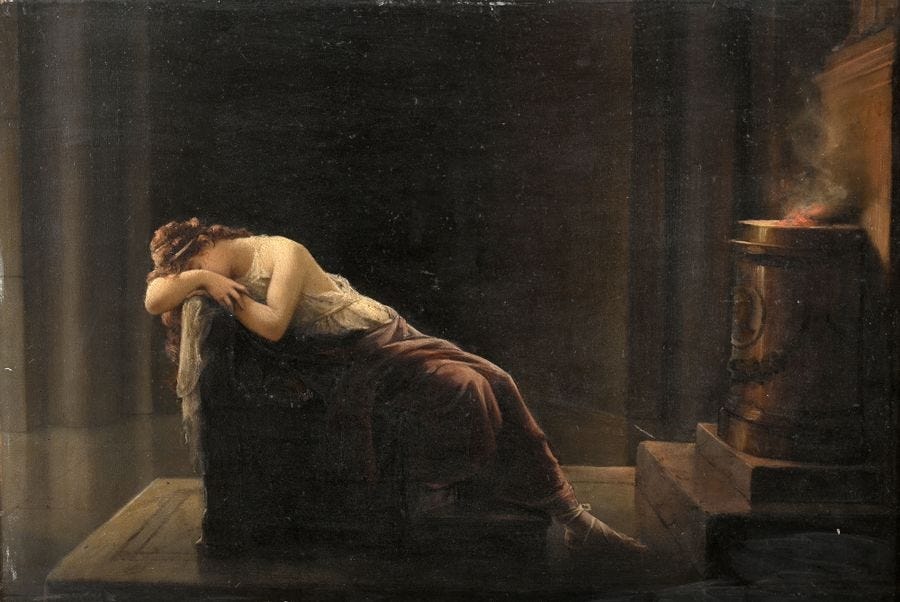The Hearth Goddess
In ancient Greek religion and mythology, Hestia is the virgin goddess of the hearth and the home. Scholars generally agree that the cult of the hearth dates back to Proto-Indo-European times. The domestic fire had to be tended with care and given offerings, and if one moved house, one carried fire from the old to the new home. The sacral or domestic hearth can likewise be found in the Greek and Roman hearth goddesses Hestia and Vesta, two names that may derive from the PIE root *h₁w-es- ("burning"). Both the ritual fires set in the temples of Vesta and the domestic fires of ancient India were circular, rather than the square form reserved for public worship in India and for the other gods in Roman antiquity.
In myth, she is the firstborn child of the Titans Cronus and Rhea, and one of the Twelve Olympians. Greek custom required that as the goddess of sacrificial fire, Hestia should receive the first offering at every sacrifice in the household. In the public domain, the hearth of the prytaneum functioned as her official sanctuary. Whenever a new colony was established, a flame from Hestia's public hearth in the mother city would be carried to the new settlement. The goddess Vesta is her Roman equivalent. Vesta is the goddess of the hearth, home, and family in Roman religion. She was rarely depicted in human form, and was more often represented by the fire of her temple in the Forum Romanum. Entry to her temple was permitted only to her priestesses, the Vestal Virgins. What should be noted is that the idea of virgin in it’s original context used to mean a woman who is independent and self-sufficient in her power. Before these notions became tied to chastity.
During the Vestalia privileged matrons walked barefoot through the city to the temple, where they presented food-offerings. Vesta was connected to liminality, and the limen ("threshold") was sacred to her. Where the majority of temples would have a statue, that of Vesta had a hearth. The fire was a religious center of Roman worship, the common hearth (focus publicus) of the whole Roman people. The Vestals were obliged to keep the sacred fire alight. If the fire went out, it must be lit from an arbor felix ("auspicious tree", probably an oak). The myths depicting Vesta and her priestesses were few; the most notable of them were tales of miraculous impregnation of a priestess by a phallus appearing in the flames of the sacred hearth. While Vesta was the flame itself, the symbol of the phallus might relate to Vesta's function in fertility cults, but it maybe also invoked the goddess herself due to its relation to the fire stick used to light the sacred flame. She was sometimes thought of as a personification of the fire stick which was inserted into a hollow piece of wood and rotated – in a phallic manner – to light her flame. Within the various feminine mysteries the phallus, sometimes symbolised by the tree both represented her consort, but also the Great Mother herself. As such one can’t really find a clear distinction between this type of symbolism. Highlighting the interconnectedness of this type of symbolism. Further showing the blurring of the lines between rigid distinctions, which are really manmade concepts.






